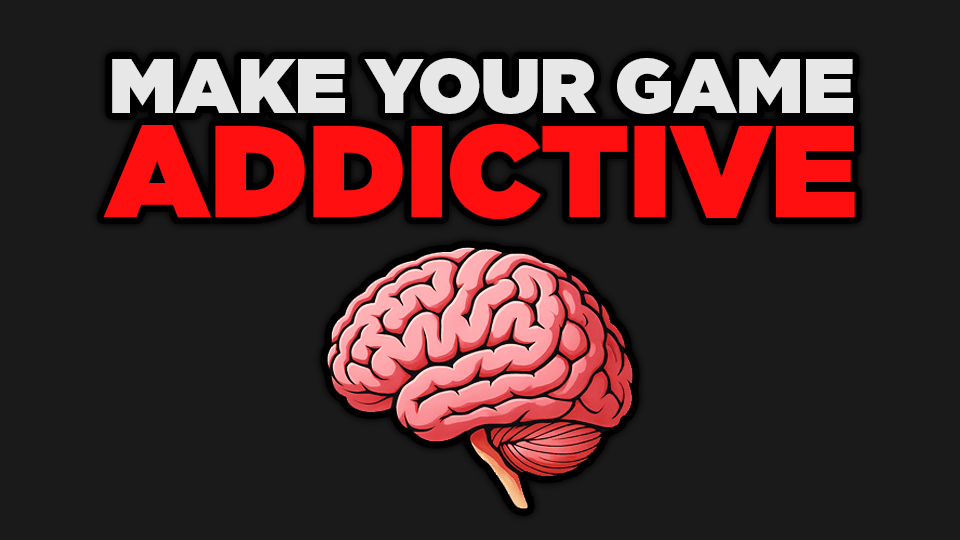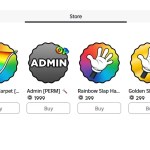How to Make Your Roblox Game More Addictive (Without Being Evil)
If you’ve played games before, chances are there were a few that were so addictive you spent hundreds of hours grinding, leveling up, or just trying to get better—without even realizing how much time was passing.
So what do game developers actually do to make their games so engaging that you can’t put them down? Is there some formula behind it? And more importantly: how can you apply that to your Roblox game, without turning it into some shady pay-to-win trap?
This is the first post in a series where I break down what makes games addictive—using science, game dev research, and just a lot of personal trial and error from building my own Roblox games.
Progression Systems
Let’s start with the obvious one: progression systems.
If you’ve ever played something like World of Warcraft, you know how fast those first few levels go. You get new skills, upgrades, gear—it all feels great. And then, slowly, it starts to take longer. You’re still unlocking stuff, but the pace drops.
This isn’t by accident. Developers use this curve to hook you early with quick wins, then space them out to keep you playing longer.
In Roblox, you can do the same thing. Whether it’s levels, stats, new gear, or even access to new areas—start with fast rewards to get the dopamine flowing. Then stretch the goals out gradually to keep players chasing that next unlock.
Bonus: progression also helps teach players how to play your game. Instead of dumping every feature on them at once, introduce mechanics slowly. Give them a reason to stay—and a way to grow.
Competition
We all love to compete. Whether it’s with our friends, strangers, or even our own past scores, a little competition goes a long way.
Even a simple leaderboard in your Roblox game can push people to spend hours trying to climb just one more spot. Or if you add a timed mode or PvP arena, suddenly players are coming back not just to win—but to win better.
And it doesn’t even have to be public competition. Games like Geometry Dash just challenge you to beat a level, or beat your last attempt. That’s still competition—just internal.
Want to boost this? Give players something to prove. Trophies, stars, speed ratings—it all counts.
Exploration and World Design
Even though we know these virtual worlds aren’t real, our brains still love exploring them. Back when I played WoW, I’d spend hours just walking around new areas, unlocking parts of the map, and enjoying the views.
In Roblox, your game doesn’t have to be massive. Just make sure it’s rewarding to move through. Hide cool spots, easter eggs, or lore bits that give your world some personality. Let players feel like there’s more to discover.
And story matters, too. You don’t need a full-blown cinematic plot, but even simple worldbuilding or dialogue can get players invested.
Rewards (Especially Random Ones)
Everyone loves rewards. Whether it’s coins, gear, XP, or cosmetics—just getting something for your effort feels good. But do you know what feels even better?
Random rewards.
When you open a chest or beat a boss and get a surprise drop, the dopamine hits way harder. That unpredictability is powerful. Even just showing a cool animation before revealing the item builds anticipation and makes the moment feel bigger, furthering how addictive the game can truly be.
So in Roblox, think about adding crates, random loot, or reward spinners. Not in a scammy way—just enough to make players excited to see what they get.
Learning and Mastery
Humans love learning. Especially when the thing we’re learning makes us better at something.
Games that start off simple and slowly build complexity give players this feeling of growth. Superhot is a great example—the mechanic seems weird at first, but once it clicks, you feel amazing.
In Roblox, this means designing a clear learning curve. Let new players get used to the controls and mechanics before throwing them into chaos. Once they get good, that feeling of “I’ve mastered this” will keep them coming back.
Be careful not to make your game too hard too fast. I made that mistake with one of my early games—people would play nonstop, die over and over, and then rage-quit. It’s not fun if you never feel like you’re improving.
Letting Players Take Breaks
This one might sound weird, but making players take breaks is actually good for keeping them addicted—in a healthy way.
Think about all those games with energy systems. You run out of hearts or stamina, and the game tells you to come back later. It might seem annoying, but it actually works. Players return because they feel like they’re missing something.
Why? Because of how dopamine tolerance works. At first, the game feels great. Then it becomes the new normal. Eventually, it stops feeling fun at all—but you keep playing just out of habit.
To avoid that, give players reasons to pause. Maybe you have daily quests, or time-based challenges. Maybe certain areas reset every hour. Whatever it is, build a natural rhythm into your game so players don’t burn out.
Final Thoughts
All of these systems—progression, competition, rewards, exploration—they’re not evil. They’re just smart design.
Making a Roblox game that people want to play isn’t about tricking them. It’s about understanding why games feel good, and using that to build something fun and lasting.
This is just the start. In the next part of this series, I’ll try putting these ideas into practice by building a game that’s actually fun to play—and maybe even a little addictive (in a good way).
Thanks for reading, and see you in the next one.






